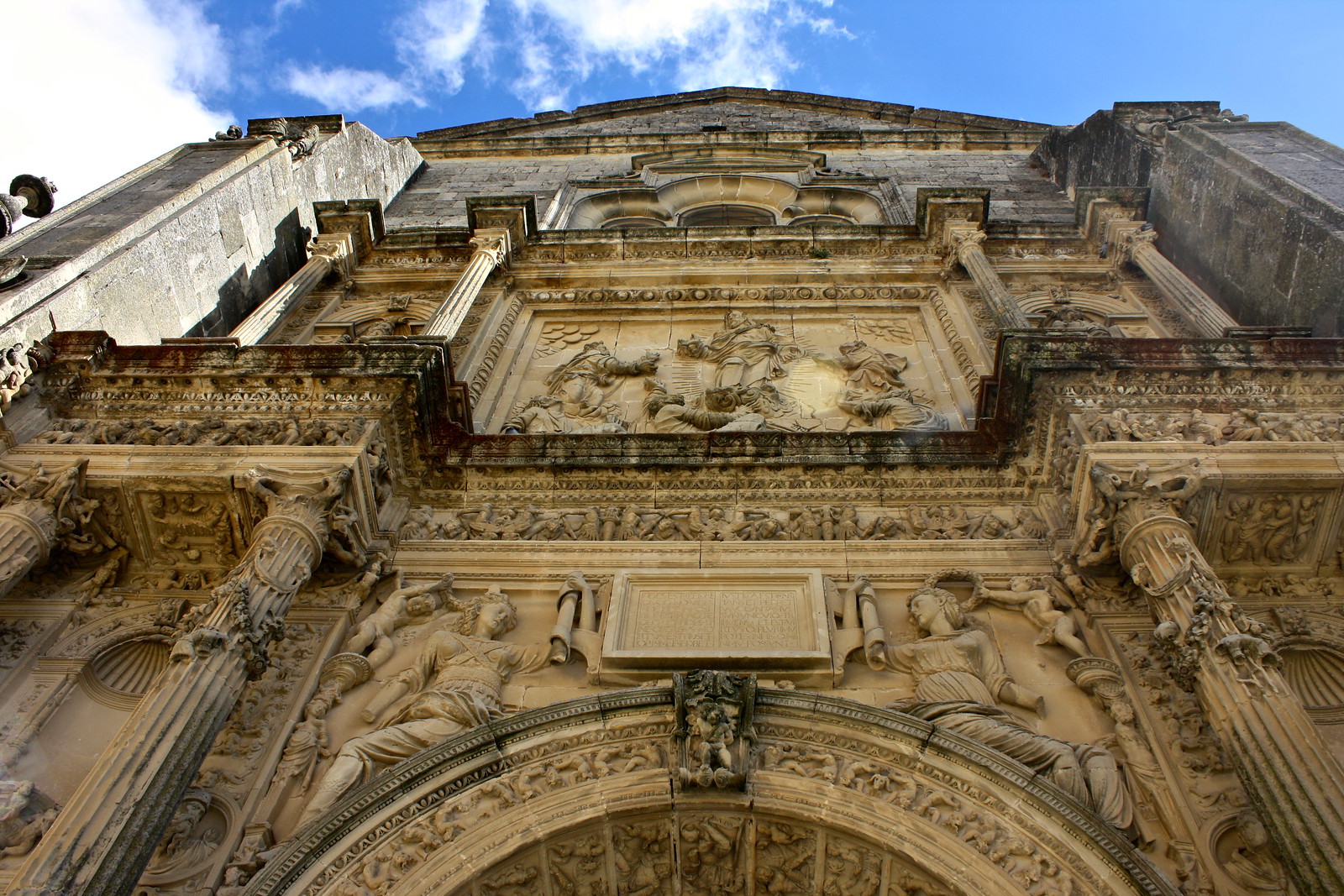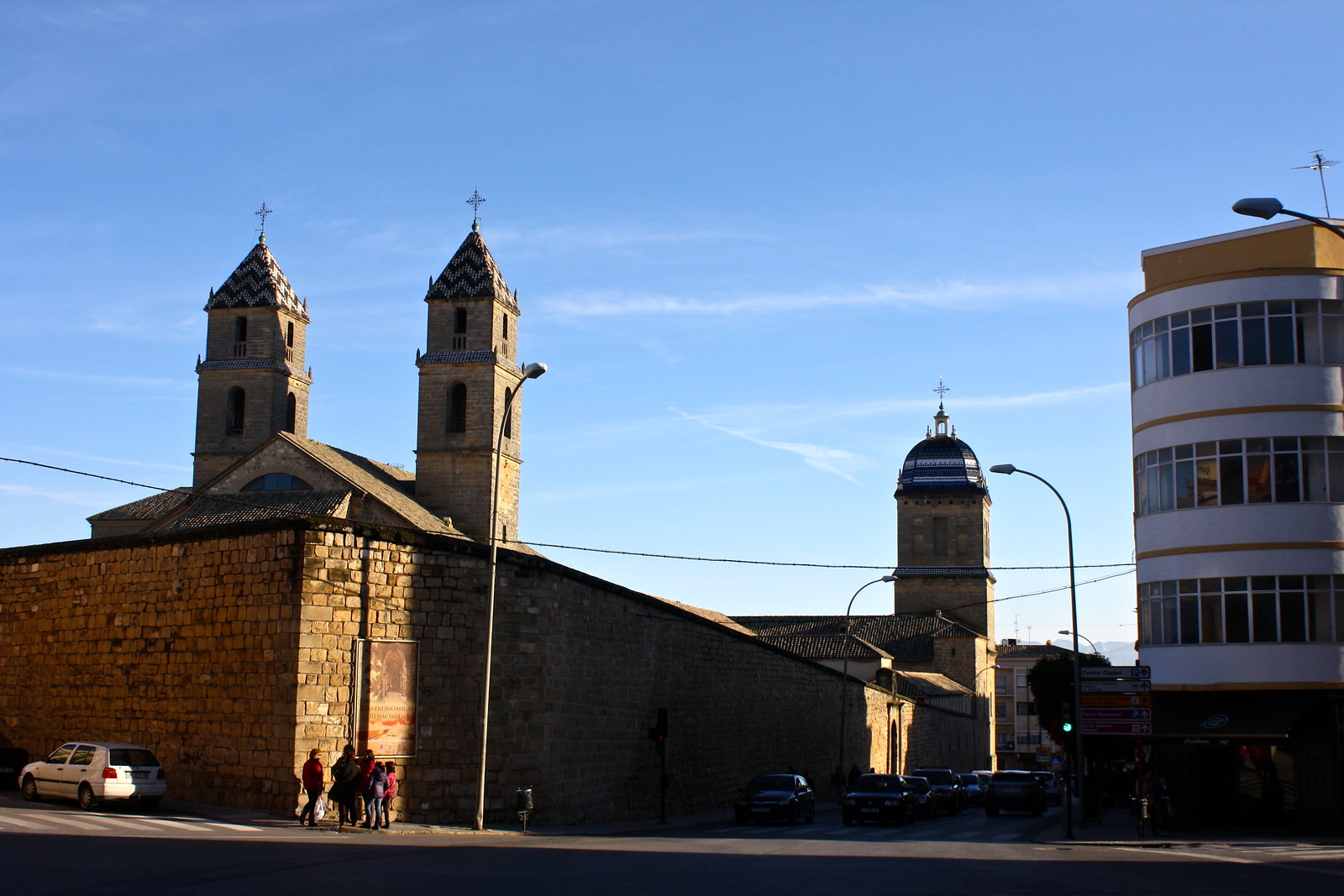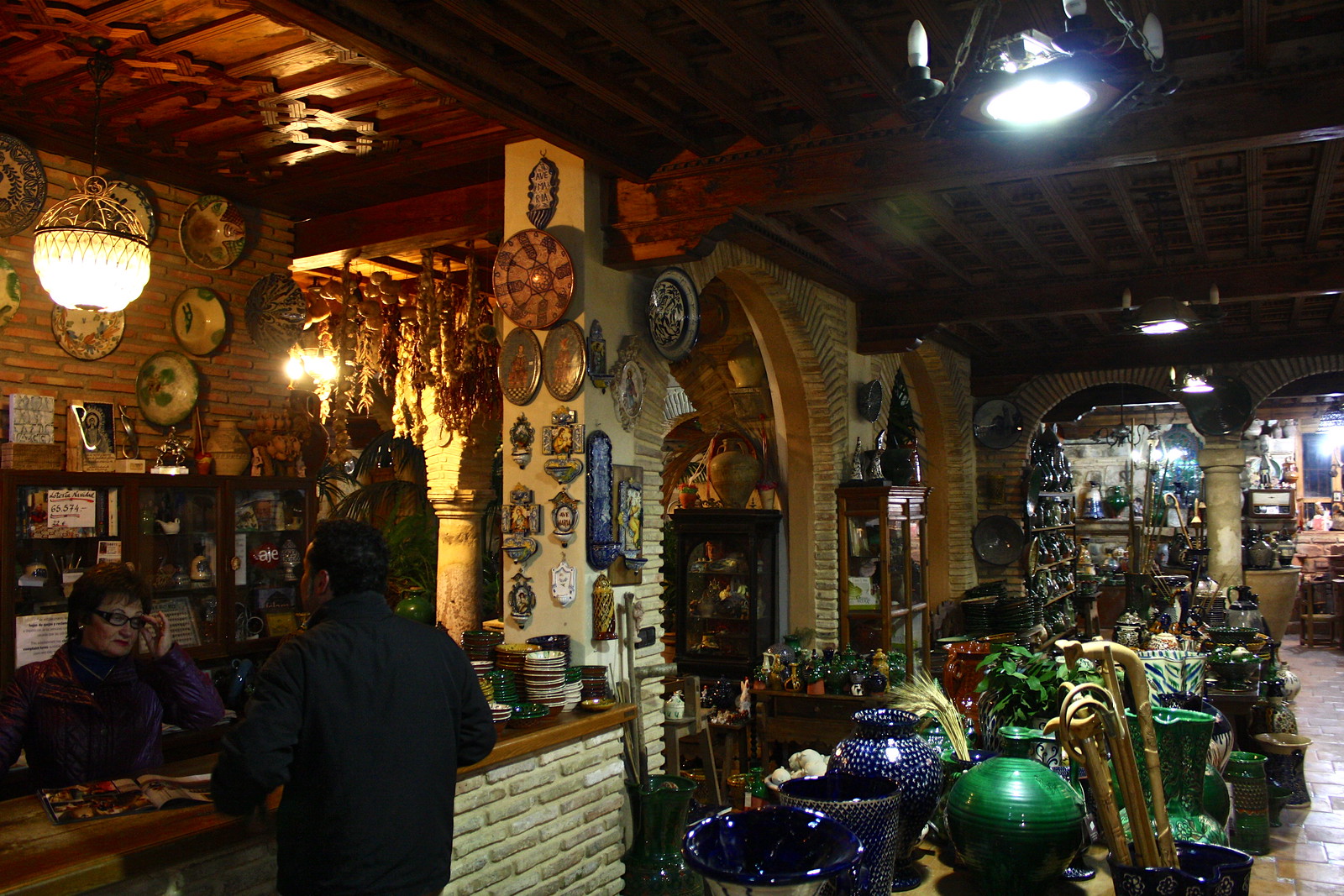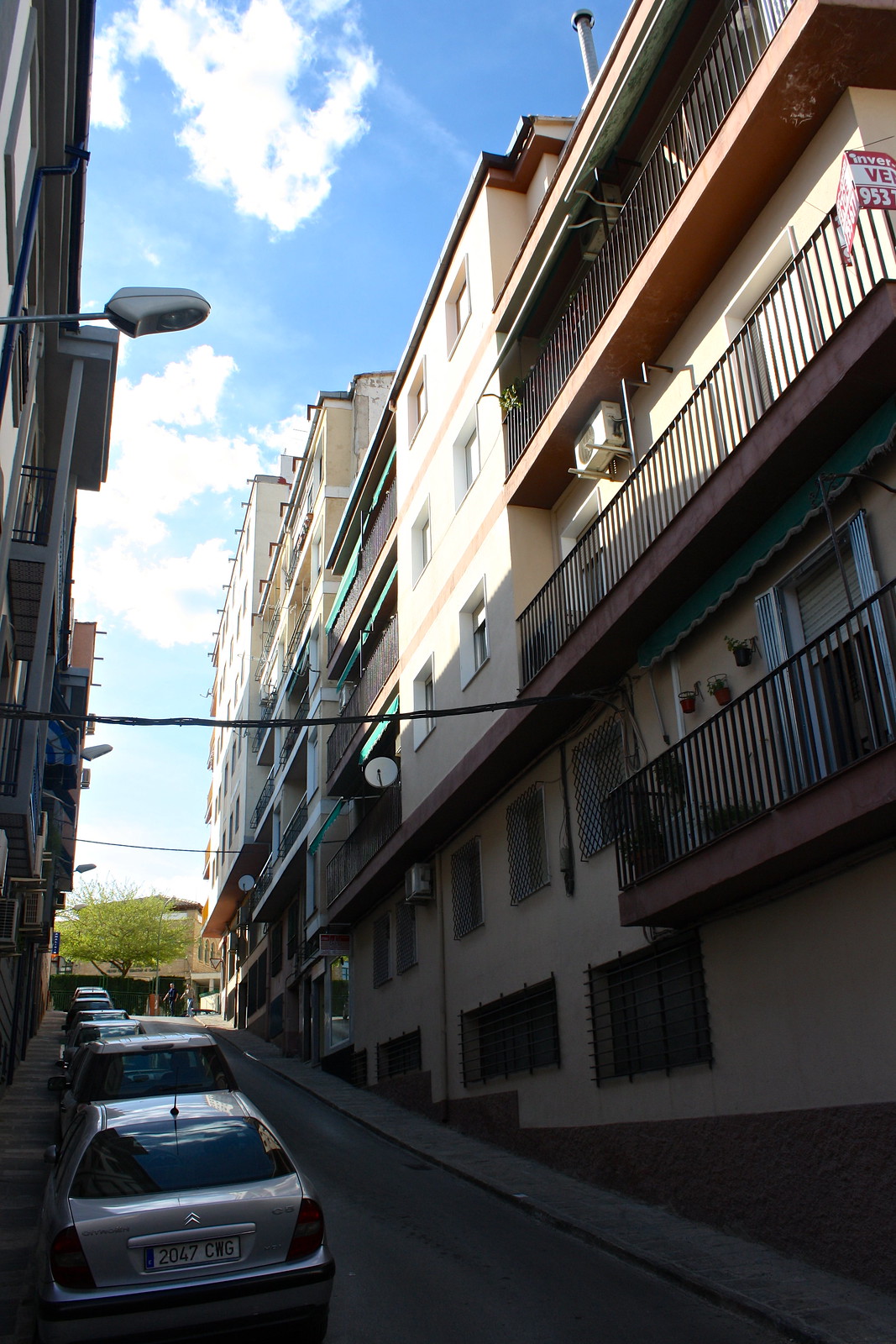An Homage to Úbeda, My Pueblo in Spain
Although most people encounter the medium-sized town of Úbeda as a quick daytrip on tours of Andalucía, for me it was something quiet different. Úbeda was where I lived for eight months while working in southern Spain, my first introduction to Spanish society, my home. From appreciating Renaissance architecture, getting lost in Moorish-era streets and alleyways, eating ALL the tapas, to adopting the local accent, a year abroad in this town of 35,000 was one of the best experiences of my life, and I will (read: already do) miss this place a lot.
Now, I’m sure you wondering, where is this crazy town Trevor keeps blabbing on and on about on his blog? Well, Úbeda (pronounced “OO-vay-dah” [ˈu.βe.ða]) is one of the biggest cities in the southern province of Jaén, about three hours south of Madrid, two east of Córdoba, and two north of Granada. As it’s located in northern Andalucía below the Despeñaperros mountain pass, Úbeda is at the crossroads of most traffic going into, out of, and across the region. The town itself sits on a plateau between the Guadalquivir and Guadalimar rivers and is bordered on all sides by countless olive groves that produce some of the best olive oil in the world.
So, how did Úbeda get to where it is today? Its history follows the general trend of the rest of the country: Iberian peoples >> Romans >> Visigoths >> Moors >> Castilians. The hills the town occupies have been inhabited since Neolithic times, and there was a small Roman town to the south called Colonia Salaria, also known as Úbeda la Vieja or “Old Úbeda.”
The city didn’t really get started until 852 CE, when the Moorish caliph Abd-al-Rahman II ordered the fortification of Madinat Ubbadat al-Arab, “The City of Úbeda of the Arabs.” Where the name Úbeda comes from is still rather unclear, seemingly deriving from such mythical characters and ancient place-names as Ibiut, Idubeda, or Bétula.
For almost 400 years, Úbeda remained part of Moorish al-Andalus, and even had its own alcázar (fortress) and Grand Mosque. But there were rumblings that it would not always be called “Ubbadat.” In the year 1212, the king of Castilla, Fernando III, led his troops to victory at the nearby Battle of Las Navas de Tolosa—which was called in Arabic chronicles the “Battle of Úbeda.” This watershed event brought the Spanish Reconquista deep into the heart of Muslim Spain, and 21 years later, the city was conquered and incorporated into the Castilian kingdom.
Something really remarkable happened during the Renaissance, Úbeda’s golden age and Spain’s Siglo de Oro, too. Local son Francisco de los Cobos y Molina became Secretary of State to King Carlos I (a.k.a. Holy Roman Emperor Charles V). Because of his important position in the government, he was able to direct funds (his income?) to the construction of a sort of mausoleum-cum-church in the historic center—a glorious Renaissance gem called the Holy Chapel of the Savior, where he and his family are buried. Cobos’ nephew, Diego de los Cobos, would go on to become Bishop of Jaén and sponsor the building of the grand Hospital de Santiago. Diego’s brother, Juan Vázquez de Molina, followed in his uncle’s footsteps and became an important advisor to King Felipe II. He built the palace that today houses the municipal government, and the historic center’s plaza is named after him.
Spanish architect Andrés de Vandelvira was the main man responsible for designing a large part of the monumental works in Úbeda and elsewhere in the province. Without him, it’s hard to say whether the Italian Renaissance would have ever come to southern Spain! By the 21st century, Úbeda’s outstanding architecture had been recognized by UNESCO, which named it and neighboring Baeza as a World Heritage Site in 2003.
Úbeda, however, is famous not just for its wonderful palaces and churches. Like I said above, in my highly biased opinion, the surrounding region produces the world’s best olive oil, and a half a dozen oil co-ops are based in town. My favorite brand was Los Cerros de Úbeda, bottled right in town, but my choice denominación de origen label goes to the mountain-sourced Sierra de Segura stuff. Both quality varieties are strong without being too sharp or bitter, smooth without tasting watered down.
Pottery (alfarería) is also an ubetense specialty. Three of the six Spanish kilns left over from Muslim times have their home here, and few different guys who go by the nickname “Tito” are famous for their craftsmanship. A distinct green glaze—unique to Úbeda—covers plates, jugs, and cups; the glazes’s warm green color comes from copper added to it, and the gleaming dark blue alternative derives from cobalt. You can find shops selling these beautiful ceramics near the town hall, the Holy Chapel of El Salvador, and in the potter’s district, the Barrio de San Millán, to the northeast of the old town.
But living in Úbeda wasn’t a never-ending tour of Renaissance mansions, olive oil factories, or pottery shops. It was just like living anywhere else but with a Spanish twist to things. I lived in a fifth-floor apartment…with two other Spanish guys. I learned how to cook for myself…eating lunch and dinner at 2 and 9pm. I went grocery shopping, ran errands, and sent postcards…during inconvenient business hours. I taught a couple of private English classes around town and sometimes went to monthly intercambios or language exchanges. I went for paseos or afternoon strolls…around the medieval city walls.
Úbeda became my adopted pueblo, a term used by Spaniards to describe their ancestral hometowns that they return to, summer after summer, despite having moved away to one of the big cities. In true Spanish form, I’m moving this fall to the big city of Santiago de Compostela—the almost 100,000-strong capital of the Galicia region—but Úbeda will always be home, the place where I grew up in my knowledge of Spanish culture, whose accent I embraced, whose thousand-year-old streets now hold one year of my life in their memories.
I couldn’t end this post, however, without giving a big shout-out to two of my American language assistant friends that I hung out with a ton—Ashley and Reina—and my favorite Brit in next-door Baeza—Nicola. From meeting each other on the bus on the way home from orientation, cooking Thanksgiving dinner together, traveling, to being each others’ support group on the weekends, I’ve really got to hand it to them; I don’t think I could have made it through the year without these sweet friends who just so happened to be English-speakers in a foreign land. So thanks guys!
Blogging note: This isn’t all I have to say about my beloved Úbeda! I’ve got a gigantic guided tour post in the works as well as one on how to spend 48 hours eating your way through town. So get excited, ’cause it’s Úbeda Week on the blog!
Have you ever adopted a second hometown after living abroad or moving across the country? I want to hear about it below in the comments section!

 |
| Holy Chapel of El Salvador |
Now, I’m sure you wondering, where is this crazy town Trevor keeps blabbing on and on about on his blog? Well, Úbeda (pronounced “OO-vay-dah” [ˈu.βe.ða]) is one of the biggest cities in the southern province of Jaén, about three hours south of Madrid, two east of Córdoba, and two north of Granada. As it’s located in northern Andalucía below the Despeñaperros mountain pass, Úbeda is at the crossroads of most traffic going into, out of, and across the region. The town itself sits on a plateau between the Guadalquivir and Guadalimar rivers and is bordered on all sides by countless olive groves that produce some of the best olive oil in the world.
So, how did Úbeda get to where it is today? Its history follows the general trend of the rest of the country: Iberian peoples >> Romans >> Visigoths >> Moors >> Castilians. The hills the town occupies have been inhabited since Neolithic times, and there was a small Roman town to the south called Colonia Salaria, also known as Úbeda la Vieja or “Old Úbeda.”
The city didn’t really get started until 852 CE, when the Moorish caliph Abd-al-Rahman II ordered the fortification of Madinat Ubbadat al-Arab, “The City of Úbeda of the Arabs.” Where the name Úbeda comes from is still rather unclear, seemingly deriving from such mythical characters and ancient place-names as Ibiut, Idubeda, or Bétula.
 |
| Archives, town hall |
For almost 400 years, Úbeda remained part of Moorish al-Andalus, and even had its own alcázar (fortress) and Grand Mosque. But there were rumblings that it would not always be called “Ubbadat.” In the year 1212, the king of Castilla, Fernando III, led his troops to victory at the nearby Battle of Las Navas de Tolosa—which was called in Arabic chronicles the “Battle of Úbeda.” This watershed event brought the Spanish Reconquista deep into the heart of Muslim Spain, and 21 years later, the city was conquered and incorporated into the Castilian kingdom.
 |
| Plaza Vázquez de Molina |
Something really remarkable happened during the Renaissance, Úbeda’s golden age and Spain’s Siglo de Oro, too. Local son Francisco de los Cobos y Molina became Secretary of State to King Carlos I (a.k.a. Holy Roman Emperor Charles V). Because of his important position in the government, he was able to direct funds (his income?) to the construction of a sort of mausoleum-cum-church in the historic center—a glorious Renaissance gem called the Holy Chapel of the Savior, where he and his family are buried. Cobos’ nephew, Diego de los Cobos, would go on to become Bishop of Jaén and sponsor the building of the grand Hospital de Santiago. Diego’s brother, Juan Vázquez de Molina, followed in his uncle’s footsteps and became an important advisor to King Felipe II. He built the palace that today houses the municipal government, and the historic center’s plaza is named after him.
Spanish architect Andrés de Vandelvira was the main man responsible for designing a large part of the monumental works in Úbeda and elsewhere in the province. Without him, it’s hard to say whether the Italian Renaissance would have ever come to southern Spain! By the 21st century, Úbeda’s outstanding architecture had been recognized by UNESCO, which named it and neighboring Baeza as a World Heritage Site in 2003.
 |
| Hospital de Santiago |
Úbeda, however, is famous not just for its wonderful palaces and churches. Like I said above, in my highly biased opinion, the surrounding region produces the world’s best olive oil, and a half a dozen oil co-ops are based in town. My favorite brand was Los Cerros de Úbeda, bottled right in town, but my choice denominación de origen label goes to the mountain-sourced Sierra de Segura stuff. Both quality varieties are strong without being too sharp or bitter, smooth without tasting watered down.
Pottery (alfarería) is also an ubetense specialty. Three of the six Spanish kilns left over from Muslim times have their home here, and few different guys who go by the nickname “Tito” are famous for their craftsmanship. A distinct green glaze—unique to Úbeda—covers plates, jugs, and cups; the glazes’s warm green color comes from copper added to it, and the gleaming dark blue alternative derives from cobalt. You can find shops selling these beautiful ceramics near the town hall, the Holy Chapel of El Salvador, and in the potter’s district, the Barrio de San Millán, to the northeast of the old town.
 |
| Alfarería Tito |
But living in Úbeda wasn’t a never-ending tour of Renaissance mansions, olive oil factories, or pottery shops. It was just like living anywhere else but with a Spanish twist to things. I lived in a fifth-floor apartment…with two other Spanish guys. I learned how to cook for myself…eating lunch and dinner at 2 and 9pm. I went grocery shopping, ran errands, and sent postcards…during inconvenient business hours. I taught a couple of private English classes around town and sometimes went to monthly intercambios or language exchanges. I went for paseos or afternoon strolls…around the medieval city walls.
Úbeda became my adopted pueblo, a term used by Spaniards to describe their ancestral hometowns that they return to, summer after summer, despite having moved away to one of the big cities. In true Spanish form, I’m moving this fall to the big city of Santiago de Compostela—the almost 100,000-strong capital of the Galicia region—but Úbeda will always be home, the place where I grew up in my knowledge of Spanish culture, whose accent I embraced, whose thousand-year-old streets now hold one year of my life in their memories.
 |
| Calle Almadén, where I lived |
I couldn’t end this post, however, without giving a big shout-out to two of my American language assistant friends that I hung out with a ton—Ashley and Reina—and my favorite Brit in next-door Baeza—Nicola. From meeting each other on the bus on the way home from orientation, cooking Thanksgiving dinner together, traveling, to being each others’ support group on the weekends, I’ve really got to hand it to them; I don’t think I could have made it through the year without these sweet friends who just so happened to be English-speakers in a foreign land. So thanks guys!
Blogging note: This isn’t all I have to say about my beloved Úbeda! I’ve got a gigantic guided tour post in the works as well as one on how to spend 48 hours eating your way through town. So get excited, ’cause it’s Úbeda Week on the blog!
Have you ever adopted a second hometown after living abroad or moving across the country? I want to hear about it below in the comments section!


